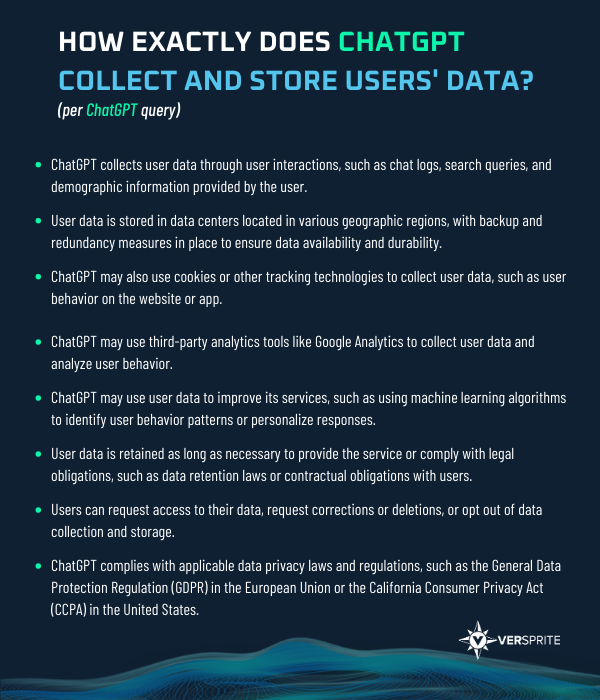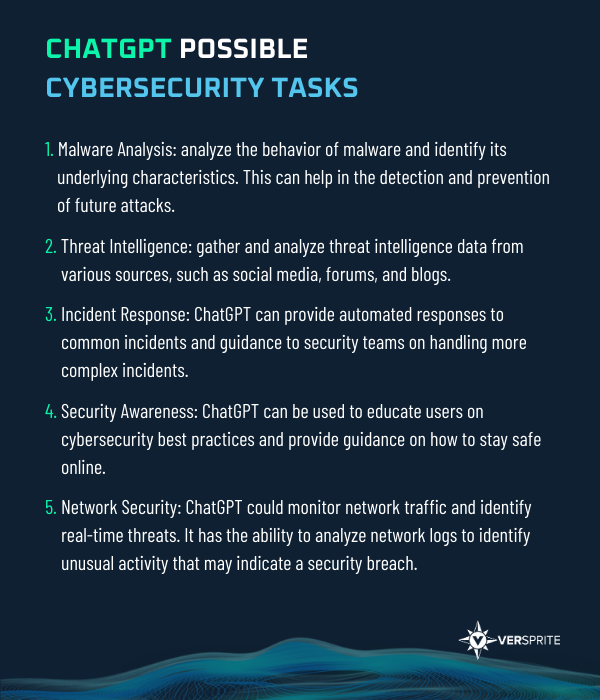The Rise of AI in Cybersecurity: Expert Insights on the Benefits and Challenges of ChatGPT
As artificial intelligence (AI) continues to revolutionize our technology interaction, businesses are turning to AI-powered tools such as ChatGPT to improve their operations and enhance customer experiences. However, with this increased adoption of AI comes a greater need for cybersecurity professionals to ensure these tools are used safely and responsibly.
In this article, we interview Tony UcedaVelez, founder and CEO of VerSprite, with extensive experience in information technology and cybersecurity. We will discuss the benefits and potential security risks of ChatGPT and offer valuable advice on how businesses can use this tool while keeping their data and systems secure. Tony UV provides insight into the role of cybersecurity in the context of AI and how to take proactive steps to mitigate risks and maximize the benefits of this growing technology.
ChatGPT has entered the stage fairly recently but is taking over many industries, including cybersecurity. As an expert in IT industry, what is your take on ChatGPT?
Tony UV: ChatGPT is undoubtedly a valuable tool that can benefit its users. However, using it responsibly and understanding the technology behind it is crucial to preventing potential security risks.
One of the key advantages of ChatGPT is its ability to respond instantly to user queries or requests. ChatGPT can understand language input and provide accurate and relevant answers, saving users a significant amount of time and effort. It can also learn from previous interactions, improving its responses over time and making it a valuable tool for businesses dealing with large customer queries.
However, as with any AI-powered tool, ChatGPT also poses certain security risks. One of the most significant risks is the potential for data breaches, particularly if ChatGPT is used to generate or handle sensitive information. For example, if ChatGPT is integrated with a company’s customer support system, it may have access to customer data such as names, email addresses, and order details. If this data is not appropriately secured, it can be accessed by unauthorized parties, leading to data breaches and potential financial losses.
Another risk associated with ChatGPT is its susceptibility to code poisoning or adversarial attacks. These attacks can manipulate the responses generated by ChatGPT, leading to users receiving incorrect or misleading information. It is essential to ensure that ChatGPT is regularly updated and maintained to mitigate the risk of such attacks.
So, while ChatGPT can provide numerous benefits to its users, it is critical to use this tool responsibly and take appropriate measures to mitigate potential security risks. By clearly understanding its intended purpose, technology, and limitations, users can effectively leverage ChatGPT’s capabilities while ensuring their data and systems remain secure.
Users should clearly understand how ChatGPT works, what kind of data it processes, and how it generates its responses. This knowledge is essential to ensure that users can use ChatGPT safely and effectively without putting themselves or their organizations at risk.

ChatGPT is a valuable tool that can significantly benefit users. However, it should be used responsibly, and users should have a certain level of understanding and expertise to qualify its responses. By doing so, users can effectively leverage ChatGPT’s capabilities without putting themselves or their organizations at risk.
Is there a place for ChatGPT in the InfoSec sectors?
Tony UV: Absolutely. ChatGPT can be adapted for use in beneficial ways within the InfoSec sector. It can help save time, but again, it must be used responsibly. Specifically, in cybersecurity, ChatGPT can be utilized for a wide range of tasks. It can validate procedures, recommend preventative actions, and provide insightful information to review cybersecurity policies.
Additionally, ChatGPT can be used to review password length standards and recommend more secure practices like passphrases. Ultimately, using ChatGPT in cybersecurity comes down to understanding and responsible usage.
In governance, for example, it can be used to review policies, access control policies, and password length standards. ChatGPT can also provide poignant recommendations for preventative actions around ransomware for small to medium-sized businesses.

Which area of cybersecurity will be affected first?
Tony UV: There is a risk that likely abuse cases of ChatGPT will be in governance, as they often create policy standards and recommendations. If governance members rely on ChatGPT as a shortcut to avoid policy writing and updating, it can lead to deception and misinformation. Humans can be extremely gullible, and many people today qualify everything in a matter of minutes in an era where popular is often synonymous with credible. This is why the responsible use of ChatGPT is critical, as it can be used to spread misinformation and undermine security. Users must keep in mind that all the information they input in the chat is captured, stored, and mined.
ChatGPT is a powerful tool that can provide useful information and advice related to cybersecurity and beyond. However, like any technology, threat actors can also use it for malicious purposes. As the use of AI and natural language processing continues to evolve, it’s important for cybersecurity experts to stay informed and up-to-date on the latest developments in order to protect against emerging threats.
As Tony UV noted, “The key to defending against these threats is awareness, education, and a strong security posture. It’s important to remember that no tool or technology is foolproof, including ChatGPT, and there is always a risk of abuse or exploitation. By taking a proactive approach to cybersecurity and staying vigilant against potential threats, individuals and organizations can reduce their risk of becoming victims of cybercrime.”
Ultimately, the ongoing development of ChatGPT and other AI technologies will continue to shape the cybersecurity landscape in new and unpredictable ways. But with the right mindset, tools, and strategies in place, we can work to stay one step ahead of the threat actors and ensure a safer, more secure digital future for all.
Read more about AI threats and opportunities.
PASTA Threat Modeling: The Process for Attack Simulation and Threat Analysis
VerSprite leverages our PASTA (Process for Attack Simulation and Threat Analysis) methodology to apply a risk-based approach to threat modeling. This methodology integrates business impact, inherent application risk, trust boundaries among application components, correlated threats, and attack patterns that exploit identified weaknesses from the threat modeling exercises.
- /
- /
- /
- /
- /
- /
- /
- /
- /
- /
- /
- /
- /
- /
- /
- /
- /
- /
- /
- /
- /
- /